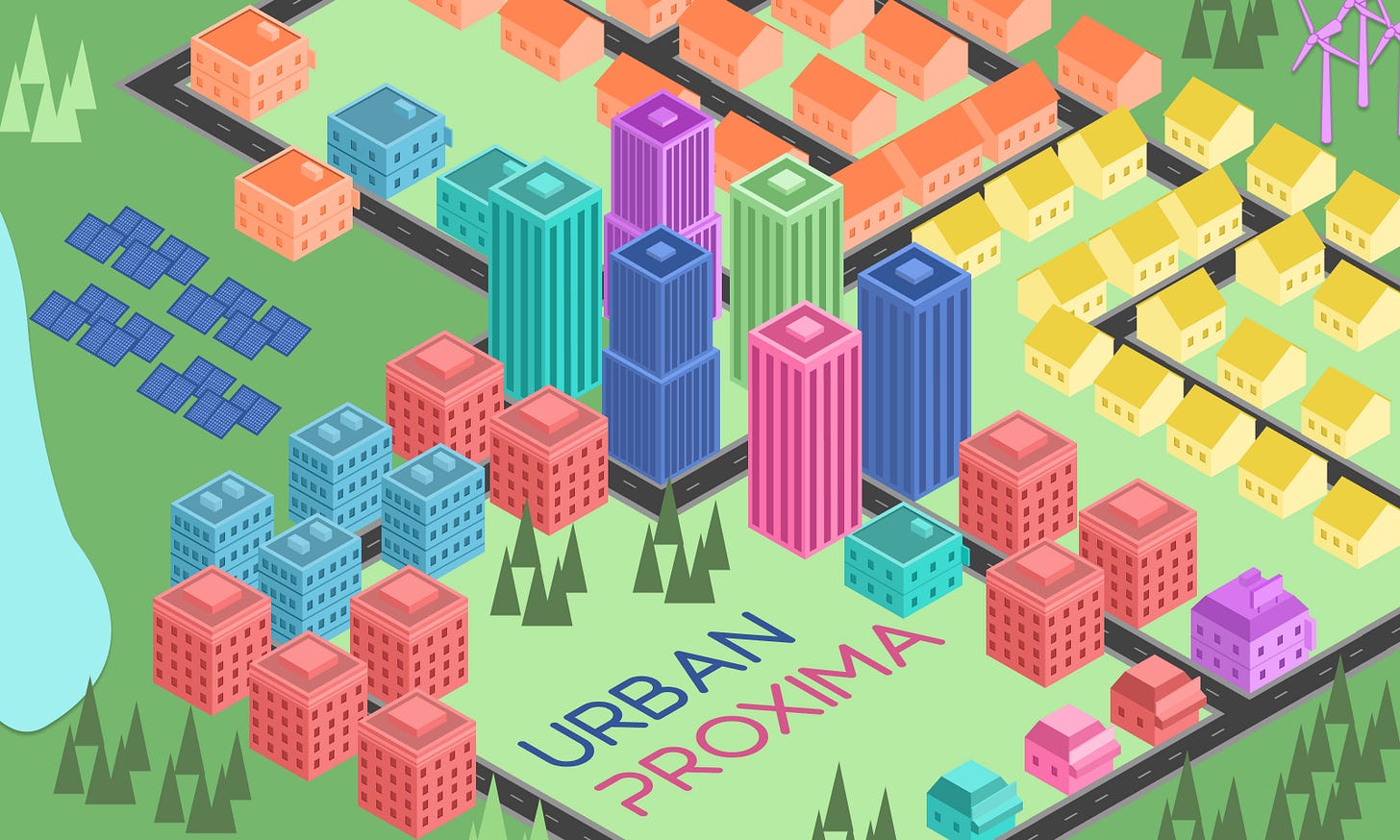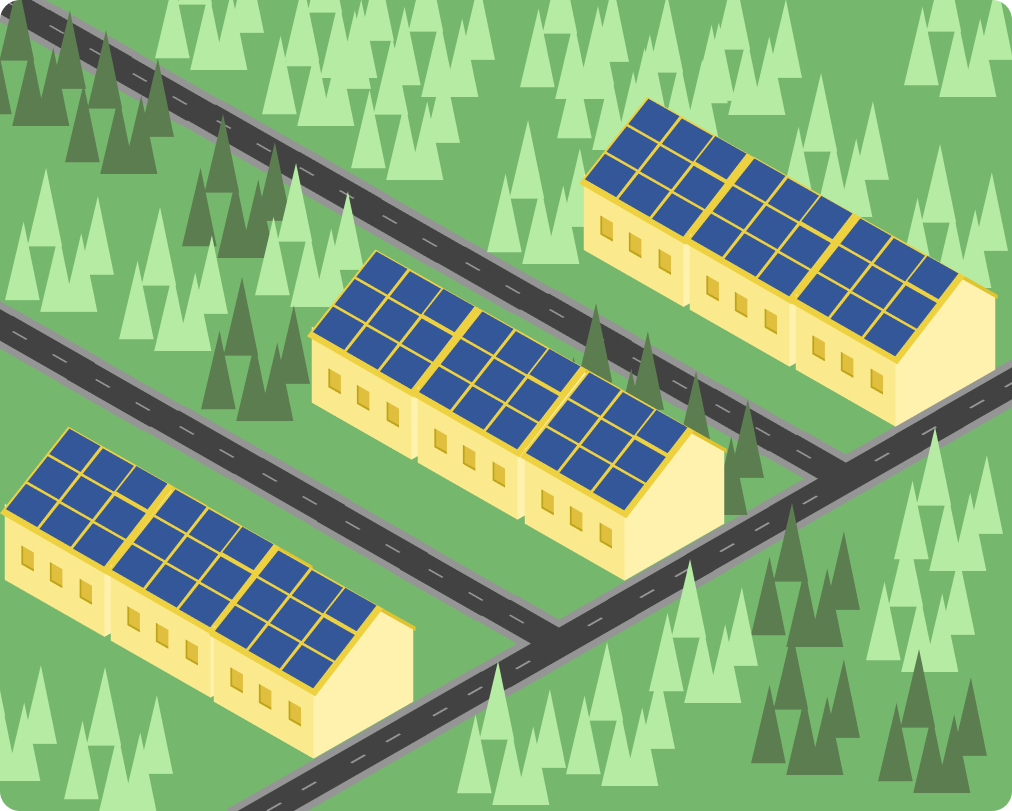How to Power a City
A conversation about how cities keep the lights on
One of my favorite ways to learn something new is to find an expert willing to hand hold me through their area of expertise — so that’s what we’re going to do today.
The following is part 1 of my conversation with Sean Fleming on the future of municipal power systems. Sean is an advisor and investor working in the energy industry with deep expertise on the inner workings of investor-owned utilities, how modern power grids are built and maintained, and what’s next in the world of energy startups. He also writes about energy tech at Clean Energy Review.
Part 1: How to Power a City
Part 2: Why Nuclear is Not Enough
Part 3: Building Solar Punk Utopia
Educating an Urbanist on the Power Grid
Jeff Fong: So, Sean, first question: How does any of this work?
I have this vague notion that we make power, we transmit power, and then there's some secret third step to get the power in the light bulb. But is that even the right way to think about this?
Sean Fleming: Yeah, that's definitely true and accurate, historically, so I'll use that as the starting point.
Historically, you'd have these big central generating stations, often a coal, gas, or nuclear power plant, that would produce like a gigawatt of power at a go (a very large amount). It gets produced at some voltage, and then we’d step that up in voltage for transmission.
Generally, power gets transmitted at very high voltage because it reduces resistance in the lines and thus losses during transmission. That's why you see those big metal towers with the long spans between them, those are the transmission lines. They're often running anywhere from 200,000 to 500,000 volts, some are up to a million these days, and that allows you to efficiently transmit power over long distances. But because it's a really high voltage, it's not super safe or useful for your light bulb at home. So then it gets stepped back down at substations to useful voltages.

To keep it really simple, you go from transmission down to what would be known as distribution voltage. That might be anywhere from 10,000 to 30,000 volts. And those will be delivered through the wooden poles you see in a city. Then it'll get to a distribution transformer, or service transformer (basically, the can up on the pole) where it'll be stepped down further for the last 100 feet to your house or building. There it’ll be routed through an electrical panel, which in the US provides power at 120V (for normal wall outlets) and 240V (for things like dryers and electric stoves). That's how voltage progressively steps down from ‘serviced by a professional in a helicopter’ to ‘painful if you stick a fork in a wall outlet’ and how we get energy from a nuclear power plant to your toaster.
For the overall architecture, I’d think of the whole thing as generation, transmission, and distribution with transformers being a thing that sits between each of those steps (and also the ultimate step between distribution and your actual house).
Doing the Math - Volts, Watts, and Kilowatt Hours
Jeff Fong: Dumb clarifying question — re: concept of voltage. Does higher vs lower voltage imply greater quantities of energy?
Like if I have a higher voltage, does that mean that I can power a light bulb for a longer duration of time? Or is that not what we're talking about there.
Sean Fleming: Generally, power is measured in watts and watts are a function of amps and volts.
For lack of a better description, volts are like the pressure in the system, pushing the electrons in it. And so if it's at a really high voltage, it’s unsafe because the electric potential is likely to jump. Lightning, for example, is like an arc from very charged clouds through air down into the ground. That's like a hundred million volts. The same is true of the mortal voltages we use in the electric grid, with more protections and barriers needed in higher voltage equipment.
Amps, short for ampere, are the flow of electrical current through a point and together with volts indicate the amount of power used at a given time.
Jeff Fong: So, the measure of quantity is watts. The more watts I have, the more light bulbs I can power at once. Volts are the pressure, so similar to high pressure pushing water through a hose, the higher the volts the greater the flow of electrons through whatever conductive medium (like a power line).
Sean Fleming: Exactly. For a homeowner, you'd see on your utility bill denoted in kilowatt hours that's 1000 watts for an hour. So you might have a 60 watt light bulb that you then run for an hour and you've used 60 watt hours. If you ran ten 100 watt light bulbs for an hour, you'd have one kilowatt hour, which in California costs somewhere between 20 and 60 cents for any given residential home.
What’s New in Power Grid Technology?
Jeff Fong: A minute ago, you mentioned that this is historically how things have worked. What’s changing in this model for power distribution?
Sean Fleming: It's getting more complicated, primarily through the introduction of renewables into the system.
With residential solar, or even community scale solar, you might have generation plugging in at different points. It's not just a one-way flow from a big generating station, like a big nuclear power plant, all going one way down through the system to your light bulb. Your house might have solar panels on its roof, and if it's producing more than you're consuming in the middle of the day (maybe you're not home and you're not running AC), power could be flowing back into the lines, right?
We see that with solar, with batteries, with these distributed generation resources. These are sometimes referred to as DERs (distributed energy resources), where there's the opportunity for two way flow. Note, it's very unlikely that you would actually go all the way back up into transmission, at least the way the systems are currently architected. So this is mostly that within the distribution portion of the system, you might have a kind of energy backfeed from residences into the distribution system and then, effectively, into a different house.
Jeff Fong: Okay, so there's generation, transformation, and distribution — with a couple transformation steps in between to adjust voltage as energy passes into different parts of the system. And you're saying that after that last transformation step, where voltage is reduced to be acceptable to residences — it’s in that last section where you can have feed-in from something like residential rooftop solar.
Sean Fleming: That’s right, though it’s worth clarifying that there's no engineer somewhere designating where the electricity goes minute by minute. It just follows fundamental physical properties, you can't really control it. Utilities do have measurements and instruments to provide visibility, and this is getting better with new technologies, but all the real-time visibility and control are not nearly as granular as you might expect.
How Smart is Smart Infrastructure, Really?
Jeff Fong: Right, so there’s no fine grained visibility into the final destination of every electron that ever passed through the system. Then how much visibility does a utility company have? And how much of that is just inference?
Sean Fleming: The short answer is surprisingly little. And so this goes into your question about how the infrastructure has gotten better over time.
Over the last 20 years, visibility has gotten a lot better. Previously, a utility company probably had visibility at the level of a substation. If you have a distribution substation, they would probably have a computer there and be able to tell if an individual circuit was out. So, you could tell that for, like, a thousand homes downstream that there could be a power outage — and that might be all. They would often have to rely on having people phone in saying their power was out, and then sending troublemen or full crews to drive along and try to identify the issue.
To help solve this, utilities have been focusing on deploying remote sensors, remote switches, smart meters, etc, that allow them to better pinpoint where outages are happening so they can more quickly respond to them and restore power.
Jeff Fong: I remember living in a single-family home and having a human being come out to look at the meter. Is that what we’re talking about all this technology replacing?
Sean Fleming: Ideally, yes. A lot of the promise of the first generation of smart meters was mostly around just simplifying meter reading and managing theft, rather than real-time tracking or outage ID.
Power theft is a big issue in certain geographies, primarily for illegal things like marijuana grow ops. Smart meters allow you to more accurately identify where power use is happening. For example, we may know there's ten houses on a certain street, we know how much power is used by ten houses with the smart meter data, but for some reason overall it looks like there's 15. With that, we can have somebody go out with a thermal camera and see if somebody's stealing power to run grow lights in their basement.
Outage response and better billing underpinned a lot of the early automation, but we are slowly getting to a place where software-enabled devices like distributed storage can start to play a bigger role in supporting the grid as well, depending on the region. The deployment of this stuff in practice remains uneven unfortunately, more pilot stage than scaled impact.
To Be ContinuedThat’s it for today.
In part 2, Sean explains the iron triangle of tradeoffs binding all utilities, how different models of regulation produce different outcomes in different states, and what’s really standing between us and energy abundance (spoiler: it’s more than just our lack of nuclear).





